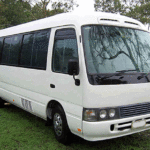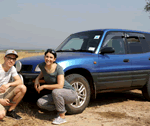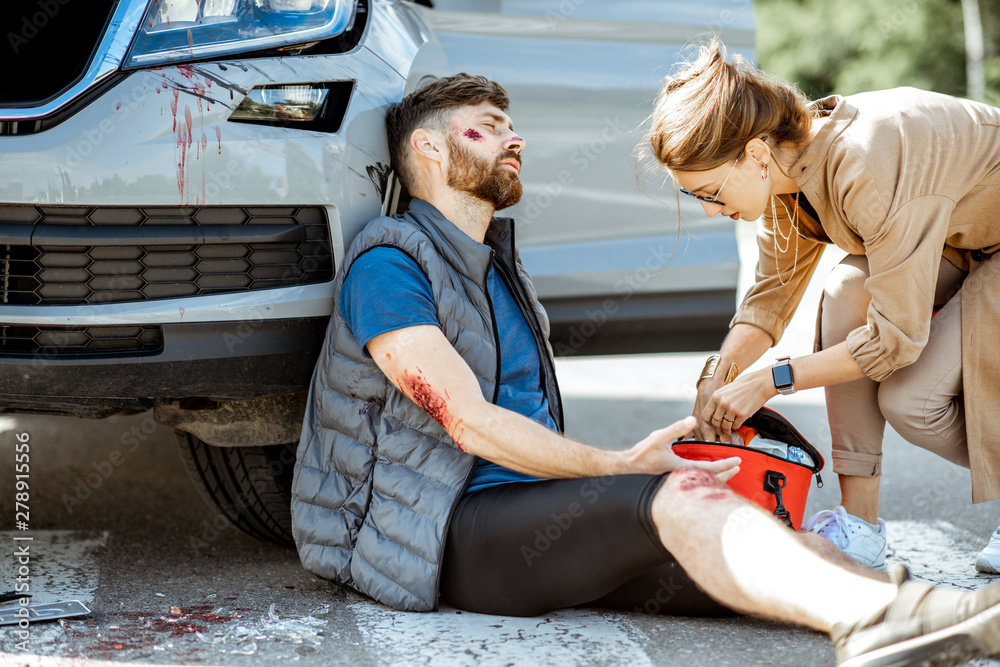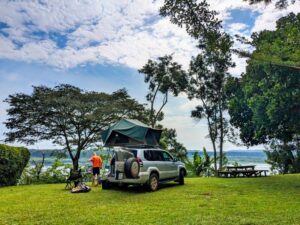In case of an unfortunate incident that could happen unexpectedly, you can save a life by preventing further injury in order to improve the victim’s condition just before you can rush him/ her to the hospital for further treatment. Giving first aid simply requires few skills and can be done by anyone. Below are the steps to follow while giving first aid;

- Step 1: Prevent further danger
Before you do anything else, make sure you make the environment safe for yourself, the victim and the other people in order not to get more casualties or become one yourself. If you are in the middle of the road, shift or move to the side and clear the space to get enough air for the victim.
- Step 2: Get emergency treatment immediately
Here the main objective is to preserve life. Be keen on D, R, A, B, and C as explained below;
“D” stands for Danger. Find out if there is continuing danger to the victim. Make the environment safe by keeping the curious onlookers away from the victim for enough air circulation.
“R” stands for Response. Check and find out if there is any responses from the victim for example analyze reactions to voice commands and touch and if there is still no response, check the throat.
“A” stands for Airway. Check if the airway/throat of the victim is clear by gently tilting his or her head backward to open the mouth. Make sure the tongue is not blocking the throat and also clear other obvious obstructions and lastly check if the victim is breathing properly.
“B” stands for Breathing. Put your ear close to the victim’s mouth for about 10 seconds to confirm that he or she is breathing. If there is no breath, immediately give the casualty the rescue breaths simply by closing his or her nostrils and blowing air into his/her mouth. Confirm if there is breathing and if not, check for circulation as shown below.
“C” stands for Circulation. Feel the pulse of the victim by placing two fingers at his or her neck. If you get no response, immediately seek for emergency assistance and while you wait, give him or her chest compression in order to boost respiration.
- Step 3: Get help as fast as you can
Help from experts like medical doctors must be summoned as quickly as possible although you should try as much as you can not to leave the victim/casualty alone. Do not forget to give the right location, description of the injury and condition of the victim and make sure the details you have given them are confirmed.
- Step 4: Movement of the victim/casualty
Unless it is really necessary or called for, do not move the casualty to any other place or position because you could easily harm them either internally or externally. Just put the badly injured or unconscious casualties in a recovery position so that they do not get breathing problems.
- Step 5: Recovery position
This simply a stable, safe and convenient position in which you can put the casualty in that he or she does not chock or vomit. Simply tilt the head backwards slightly, put the lower arm at a right angle and the upper arm under the cheek. Stretch the lower leg straight and bend the upper leg on a right angle.
- Step 6: Bleeding and injury treatment
This is a very crucial state because in just a few minutes, someone can bleed to death due to the heavy loss of blood if he or she is not attended to as fast as possible. Make sure you protect your hands by wearing gloves from the first aid kit before you do anything. Check if there is no object in the wound for example glass, stick, metal or anything else. If there is nothing, apply firm pressure over the wound using a clean padding and tie it properly with a bandage or cloth. In case there are no broken bones, raise the bleeding limb to reduce the pressure of blood flow.
- Step 7: Rush the victim to hospital
Make quick arrangements for the transportation of the casualty to a nearby hospital for further medical assistance once you notice that the first aid has helped stabilize his or her condition a bit.
In the unlikely event of a road accident in Uganda while on a road trip , you can follow the above first aid steps to save a life today. For more travel tips and car rental news you can call our reservations helpline on +256-705415605.










Related Articles
Best Time to Visit Uganda for Safaris: Month-by-Month Guide
Why Choose a 4×4 Car Rental in Uganda for Your Safari Trip
Cheap Car Rental Uganda: Save Money Not Sacrificing Quality